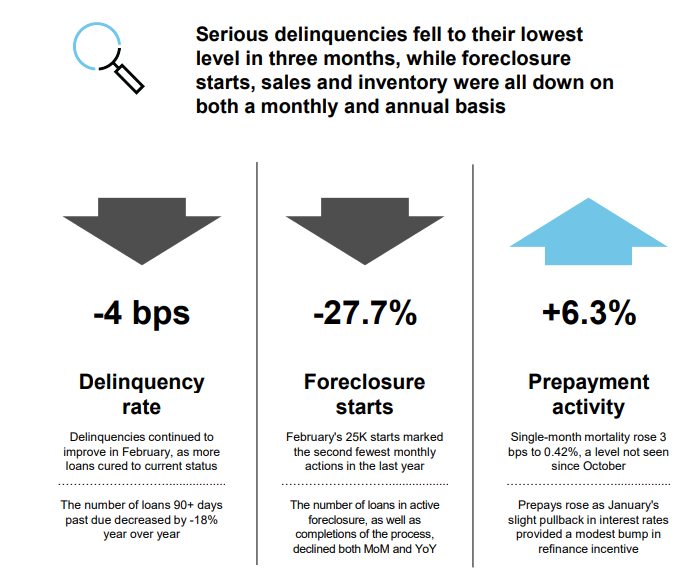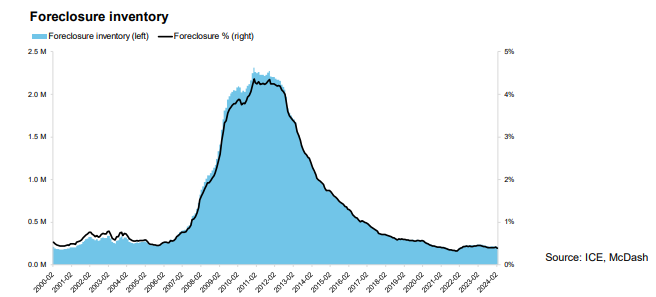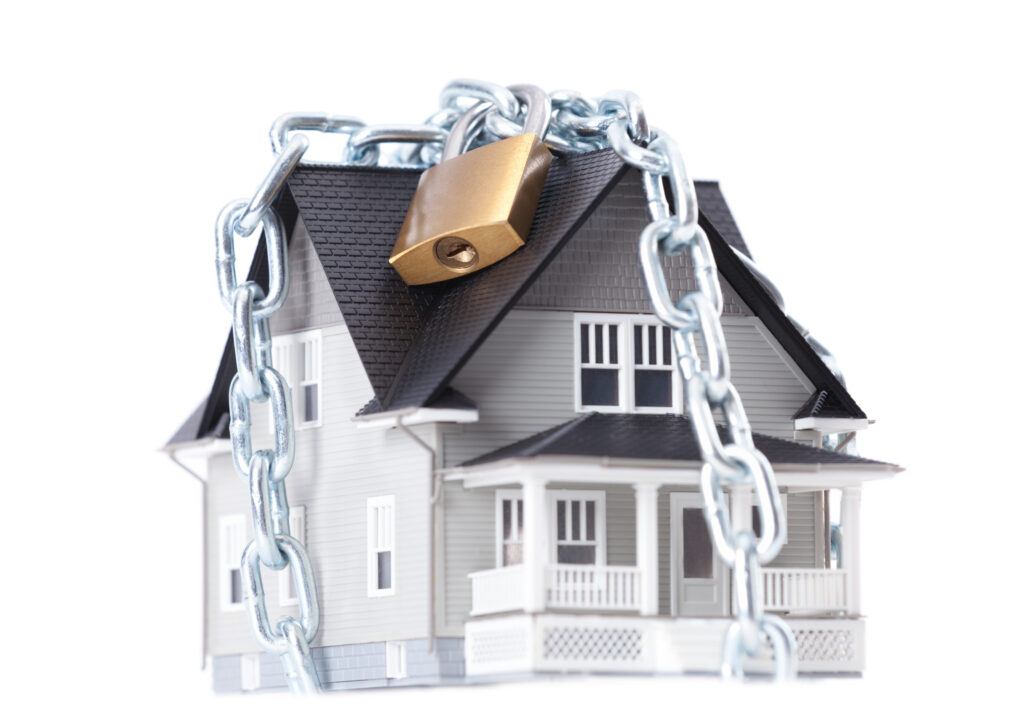Intercontinental Exchange, Inc., colloquially known as ICE, has released its April 2024 Mortgage Monitor Report based on internal and publicly available data sets which found that overall from the year 2000 to 2022, upgrading to a home roughly 25% more than their current home would require the average homeowner to increase their principal and interest payments by roughly 40%—or $400—per month.
According to ICE, there are many headwinds facing the would-be seller in today’s market, making their existing mortgage payment the most attractive option in comparison.
While this has been the case for some time, according to Andy Walden, VP of Enterprise Research Strategy, the ICE Research and Analysis team sought to quantify this “lock-in effect” beyond simply identifying the number of borrowers within or below a given interest rate band.
“After American mortgage holders secured some of the lowest first lien rates ever and benefited from record home price growth on top of that, we wanted to quantify just how locked-in folks truly are and what kind of rate declines would be needed to shake some of that inventory loose,” said Walden. “Leveraging the ICE Home Price Index and our loan level mortgage data, we looked at how much it would cost the average homeowner with a mortgage to trade up to a 25% more expensive home in today’s market—or to simply move across the street, for that matter, into a home identical to their own. The results were bracing, to say the least.
“That average homeowner’s mortgage payment would more than double, to gain just 25% in property value—hardly an entertaining proposition,” Walden continued. “That said, you’d be hard-pressed to find a more vivid illustration of the lock-in effect that’s kept for sale inventory in a hole for the last few years.”
“Simply giving up their current rate to move across the street to an equivalently priced home in today’s market would result in a nearly 40% increase in P&I, an average of $500 more per month,” Walden continued. “Lower rates would ease the calculation for many and make moves more reasonable. But the net result continues to be too few homes for too many buyers. Until that fundamental mismatch is addressed, simple supply and demand will continue to press on both inventory and affordability.”
Though inventory levels are still depressed, there have been signs of improvement: inventory lags 40% below pre-pandemic levels and February’s inventory deficit was the shallowest of any February since 2020. Inventory levels rose in 60 of the 100 largest U.S. markets in the month, with 65% of major markets having more homes available for sale today than they did at the same time last year.

“After closing out 2023 at an 11-year low, home sales have begun to improve over the last two months,” Walden continued. “In fact, lower interest rates in late Q4 and early Q1 led to February home sales hitting their highest adjusted level since March 2023. With sales rising, and inventory still tight, months of supply edged slightly lower in February, continuing to provide a floor for home prices. Our February ICE Home Price Index showed strength in that regard, with adjusted home prices rising by +0.43%, up from +0.33% in January, which is equivalent to a +5.3% seasonally adjusted annualized rate. Keep in mind that SAAR had fallen below 1% as recently as five months ago.”
The Mortgage Monitor also touched on the “lock-in” effect, where people are choosing to stay in their home despite their needs for different amenities, due to fear of taking out a mortgage at a higher, less-than-favorable rate. The lock-in effect on inventory varies significantly across geographies, with the cost to give up an existing mortgage and buy a 25% more expensive home ranging from a low of a 72% payment increase in Buffalo, N.Y., to more than 140% in Los Angeles and San Jose, Calif.
ICE continued saying that while home prices and mortgage amounts are certainly a factor in that increased cost, the effect is compounded by the fact that borrowers in more expensive cities tend to have both lower mortgage rates and higher unpaid balances on their existing homes. Because of this, the lock-in effect on inventories may be strongest in more expensive California markets such as Los Angeles, San Diego, San Francisco and San Jose – markets that also face challenges in terms of new construction.
“Mortgage rates need to come down to dislodge the lock-in effect,” Walden concluded. “Since most factors influencing 30-year rates are out of lenders’ control, they need to be able to find ways to compress spreads without simultaneously compressing their own profit margins. That’s key to our mission at ICE—identifying and eliminating inefficiencies in housing finance through technology, while finding smarter, faster, cheaper and more transparent ways to originate loans and increase liquidity.”

Other high-level findings include:
- Today, that same trade-up buyer’s payment would increase by an average of $1,384 per month, a 103% jump that highlights the real-world pressures keeping current mortgage holders “locked in” to their homes.
- Simply giving up their current rate to move across the street to an equivalently priced home in today’s market would result in a nearly 40% increase in P&I—roughly as much as the historical trade-up cost.
- Homeowners who took out mortgages when rates were near record lows in 2020 and 2021 face an even steeper “move across the street” cost, with such a lateral move requiring a 60% higher monthly payment.
- Trading up for these borrowers—who account for two out of every five active mortgages—would take a 132% increase in monthly P&I.
- The trade-up cost—and the associated lock-in effect—varies significantly across geographies, from a 72% payment increase on the low end in Buffalo to more than 140% in Los Angeles and San Jose.
- Inventory remains constricted, but improved, as 65% of major U.S. markets have more homes available for sale today than at this time last year.
- Lower interest rates in late Q4 and early Q1 led to home sales in February hitting their highest adjusted level since March 2023.
- The February ICE Home Price Index showed strength in the market, with adjusted home prices rising by +0.43%, up from +0.33% in January, which is equivalent to a +5.3% seasonally adjusted annualized rate.
Click here to see the release in its entirety and the full findings, including graphs and charts, of the report here.










